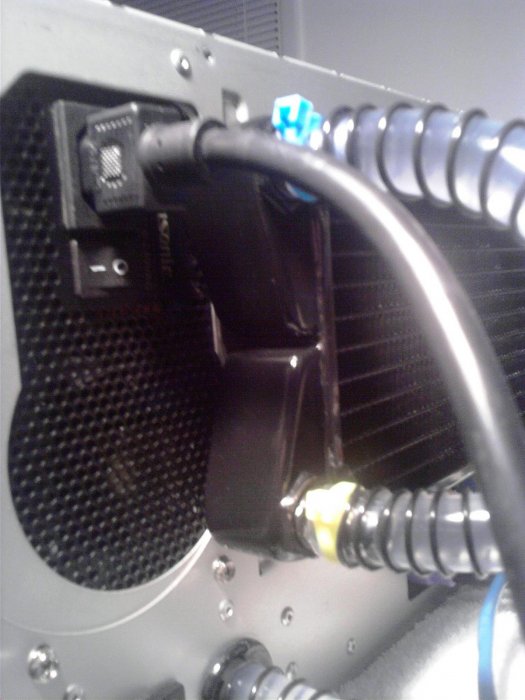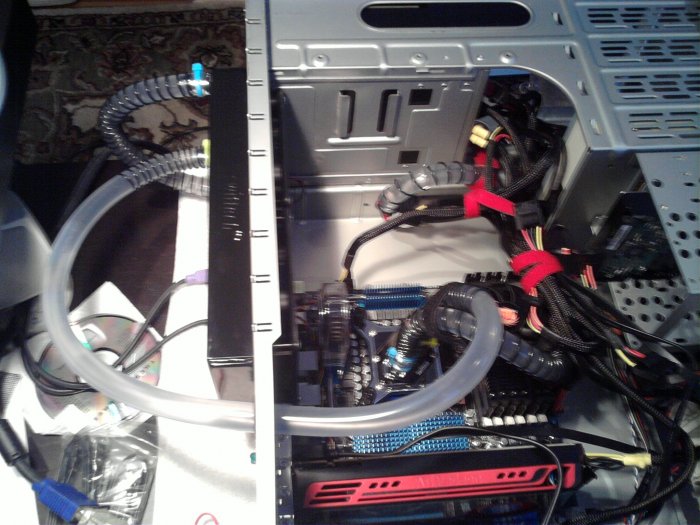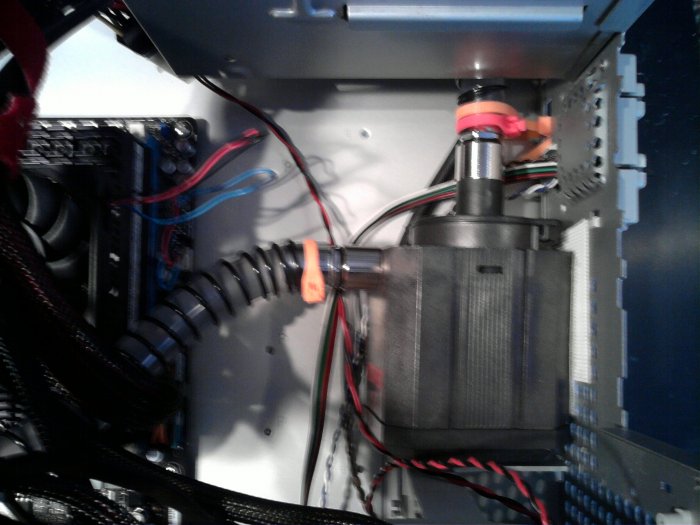I got tired of spending $$ & especially waiting on UPS ... and these fans are quiet.
Hot? What is hot ... well being the geek of multiple disciplines (or is it undisciplined) that I am, I have a pyrometer (infrared thermometer) used for checking my tire temperatures when racing.

Basically it allows reading temperature w/o contact. Sooooo, probing around all over the system I get about a 1 degree temperature change and that likely exceeds the accuracy of the method.

Even the inlet & outlet of the radiator only has about a degree difference if I use my imagination some. I am not saying that this is a good method, but it is what I have.
When OC-ed 4.4GHz (or so) & running OCCT, it reports core #1 temp to reach 71 deg C. The pyrometer reports 27 to 29 deg C with not a lot of rhyme or reason ... again speaks to the measurement method, but it is what I have. Core #1 idle temperature is 38 deg C, BTW. Stock idle for Core #1 was around 27 deg C
But, what I think it indicates is that water flow is ample. And, that was a priority of the new build & I used as justification to get rid of the 1/4" tubing. I never thought to probe that system, but there was a definite temperature differential across the old radiator.
I have read someone's explanation of what you want in a water cooled system. He tried to use some logic about a low flow thru the radiator so that you would see a more pronounced delta.
I cannot agree with that. My own analysis suggests maximum flow equals maximum thermal exchange. And it says that if I do want lower temperatures that can accomplished with increasing the air flow by adding external fans to the radiator. A bigger radiator also would do the job, but there is a dis-proportionately larger PITA factor involved with that.
To your last point or question, this *was* guesstimate & opinion at that time. Lots of materials "flow" ... even glass ... over time. So putting the springs on the tubing is a precaution for the future and I can't offer science or numbers, but just gut feel. The 1/4" tubing developed a tendency to collapse at the grommets on the back of the case. They did not start out that way.
And rethinking where the hotter section of the tubing is ... flow is so high that the temperature can be considered uniform ... without a better way to measure.




